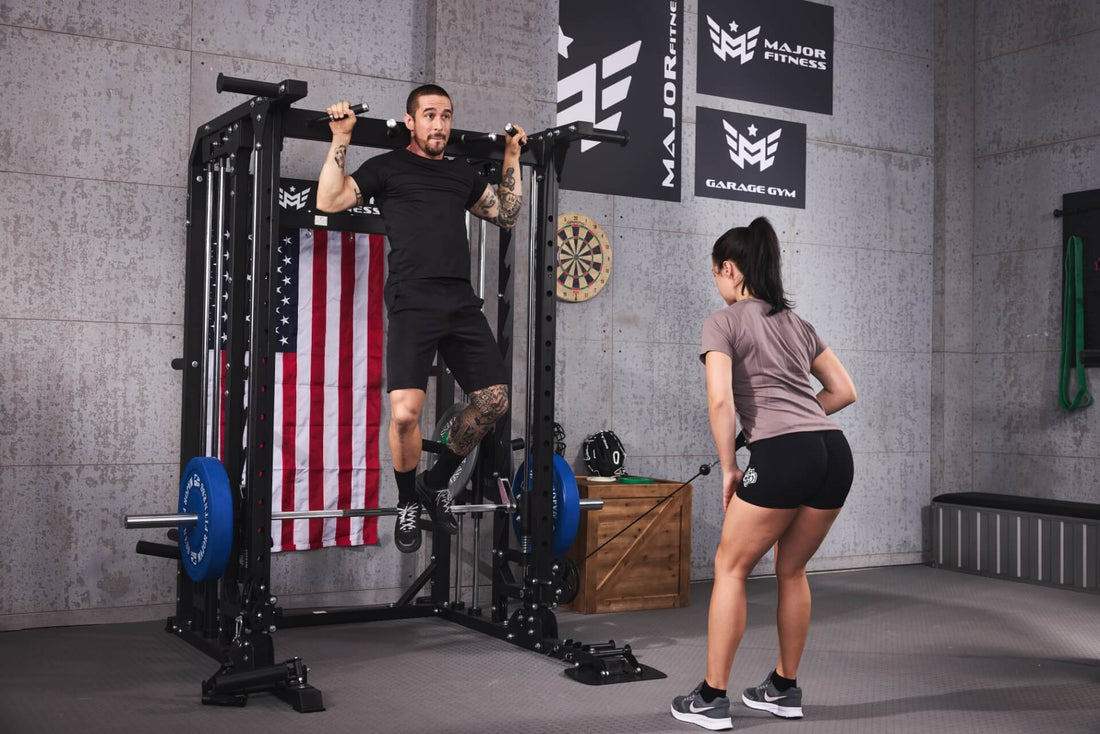
Are you struggling to perform even a single pull-up? You're not alone. Many fitness enthusiasts and beginners alike find the pull-up to be one of the most challenging exercises to master. However, with the right strategy and determination, you can build the necessary strength to perform this impressive feat. In this guide, we'll take you through a step-by-step approach on how to build pull up strength, so you can conquer the bar with confidence.
Understanding the Muscle Groups Involved
To effectively build pull-up strength, it's essential to understand the primary muscle groups involved:
- Latissimus Dorsi (Lats): These are the largest muscles in your back, responsible for the pulling motion.
- Biceps: Your biceps play a significant role in bending your elbows during the pull-up.
- Trapezius: These upper back muscles help stabilize your shoulders.
- Rhomboids: Located between your shoulder blades, these muscles assist with scapular retraction.
- Core: A strong core helps maintain a stable body position during the movement.
Step-by-Step Plan to Build Pull Up Strength
1. Start with Dead Hangs
Before attempting pull-ups, get comfortable hanging from the bar. Dead hangs will help you develop grip strength and familiarize your body with the pull-up position.
How to do it:
- Find a sturdy pull-up bar.
- Grab the bar with an overhand grip, hands shoulder-width apart.
- Hang with your arms fully extended and feet off the ground.
- Hold for as long as possible, aiming to gradually increase your time.
2. Incorporate Assisted Pull-Ups
Assisted pull-ups are a great way to gradually build strength. You can use resistance bands or an assisted pull-up machine.
How to do it:
- Loop a resistance band around the pull-up bar and place one or both knees in the band for support.
- Alternatively, use an assisted pull-up machine at the gym.
- Perform pull-ups with the assistance of the band or machine, focusing on full range of motion.
- Gradually decrease the assistance as you get stronger.
3. Practice Negative Pull-Ups
Negative pull-ups focus on the eccentric (lowering) phase of the movement, which can be very effective for building strength.
How to do it:
- Use a box or jump to get your chin above the bar.
- Slowly lower yourself down until your arms are fully extended.
- Aim for a controlled descent lasting 3-5 seconds.
- Perform 4-5 sets of 3-5 reps.
4. Strengthen Your Core
A strong core is crucial for maintaining a solid body position during pull-ups.
How to do it:
- Incorporate exercises like planks, leg raises, and hollow body holds into your routine.
- Aim for 3-4 sets of 30-60 seconds each.
5. Train Your Back and Biceps
Complement your pull-up training with exercises that target your back and biceps.
Effective exercises include:
- Rows (barbell, dumbbell, or TRX)
- Lat pulldowns
- Bicep curls
- Face pulls
Perform 3-4 sets of 8-12 reps for each exercise.

Nutrition and Recovery
Fuel Your Muscles
Proper nutrition is key to muscle growth and recovery. Ensure you're consuming enough protein, carbohydrates, and healthy fats to support your training.
Consider:
- Eating a balanced meal with protein and carbs within 2 hours of your workout.
- Staying hydrated throughout the day.
- Including nutrient-dense foods like lean meats, vegetables, fruits, and whole grains in your diet.
Prioritize Recovery
Give your muscles adequate time to recover and grow by incorporating rest days into your routine.
Tips for recovery:
- Get 7-9 hours of sleep per night.
- Engage in active recovery activities like light stretching or walking.
- Consider foam rolling or massage to help alleviate muscle soreness.
Tracking Your Progress
Keep a workout journal to track your progress and stay motivated. Record your:
- Dead hang times
- Assisted pull-up reps and resistance levels
- Negative pull-up reps
- Strength training exercises and weights
- Nutrition and hydration
Common Mistakes to Avoid
When learning how to build pull up strength, avoid these common pitfalls:
- Using Momentum: Focus on controlled movements instead of swinging your body.
- Neglecting Form: Proper form is essential for preventing injury and maximizing muscle engagement
- Skipping Warm-Up: Always include a dynamic warm-up to prepare your muscles for exercise.
- Overtraining: Allow adequate rest to avoid overuse injuries and burnout.
Conclusion
Building pull-up strength takes time, patience, and dedication. By following this comprehensive guide and consistently practicing, you'll gradually see improvement in your strength and ability to perform pull-ups. Remember, everyone's fitness journey is unique, so stay focused on your progress and celebrate each milestone along the way.
Ready to get started? Grab a pull-up bar, and let's conquer this challenge together!





















